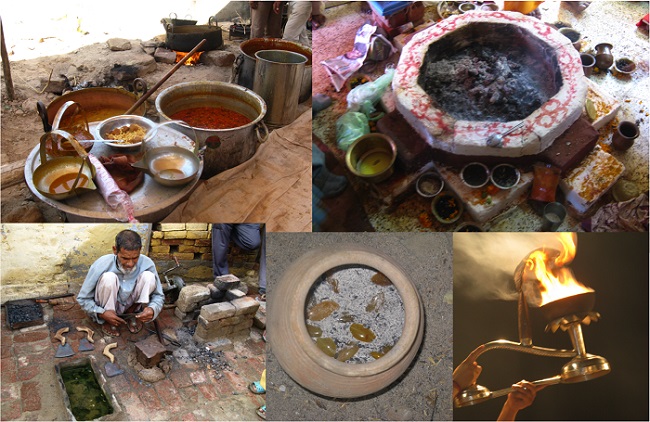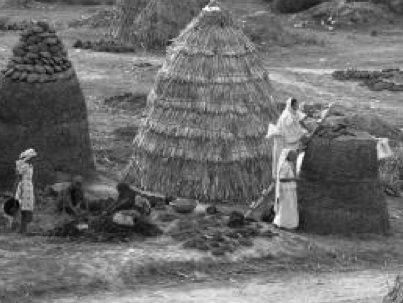How can the analysis of vegetable matter help understand the relationship between humans and the environment?
How can the analysis of vegetable matter help understand the relationship between humans and the environment?
How can the analysis of vegetable matter help understand the relationship between humans and the environment?
This is the subject of an article signed by Carla Lancelotti, a researcher with the CaSEs research group at UPF, published in the journal PLOS ONE. The study, based on the analysis of strategies of the exploitation and use of various types of fuel, focuses on the urban period of the Indus Valley civilization, in the area of India and Pakistan, between 2500-1900 BC.
The reconstruction of the way in which fuel resources were exploited in the past for domestic and industrial use is one of the tools to explore the interactions between peoples and the environment. The relationship of societies with the available natural resources is not just a matter of climate and environmental conditions: there are numerous practical, social and cultural reasons that compel people to burn specific fuels or to apply a certain exploitation strategy.

An article published in the journal PLOS ONE, signed by Carla Lancelotti, a researcher with the Complexity and Socio-Ecological Dynamics (CaSEs) research group of the Department of Humanities at UPF, an expert in human ecology in arid lands, explores the socio-ecological behaviours that promoted the collection and use of fuel resources during the urban period of the Indus Valley Civilization (2600-1900 BC), in the area of Southern Asia.
This period corresponds to a phase of expansion and population increase, when major urban centres and small rural settlements existed across a wide area, which includes today’s Pakistan and North-Western India. In this context of growth, the continuous and extensive exploitation of wood adversely affected the environment, particularly arid countries where forest is scarce.
In addition, as of 2100 BC, Southern Asia saw an increase in aridity and a period of scarce rainfall, and so exploitation activities may have affected the available natural resources. This situation could have been offset by a differentiation in the use of fuel and the combined use of local species of wood with alternative fuels, such as manure and crop processing waste: this is evidence of resilient socio-ecological practices during the 700 years of the Indus’s urban development.
Use of various methods to discriminate fuel
“The combined analysis of plant material taken from four archaeological sites in the urban area of the Indus has allowed evaluating the mechanisms through which people exploited wood and diversified at their fuel resources to adapt to the arid and semiarid environments where they lived”, says Carla Lancelotti.
“To perform this assessment, it is essential to adopt methods that allow the proper identification, not just of the wood (which is relatively easy to detect in the archaeological record) but also of all types of fuel that could be used, such as manure and the remains of crop processing”, the researcher highlights.
However, “this kind of fuel does not always leave macroscopic evidence in the archaeological record as it is largely burnt to ashes. This limitation highlights the need to integrate different techniques to detect the use of these alternative fuels”.
In her analysis, Carla Lancelotti has used a combination of various methods: the presence or absence of phytoliths (biomineralization of vegetable origin), of spherulites (small calcareous bodies that occur in the stomachs of herbivores) and of chemical elements.
Study of four representative archaeological digs
 The sites chosen for the research were representative of the various socio-economic fields in the area, from a big city, considered one of the “capitals” of the Indus Valley civilization (Harappa, Punjab, Pakistan), to a medium-sized town with stone wall fortifications (Kanmer, Gujarat, India), a place with mud brick walls (Shikarpur, Gujarat, India), and a relatively small rural village (Alamgirpur, Uttar Pradesh, India). Despite being found in different geographic locations and in different river systems, they were located in areas with similar vegetation, between arid and semi-arid, which facilitated the evaluation of local adaptations.
The sites chosen for the research were representative of the various socio-economic fields in the area, from a big city, considered one of the “capitals” of the Indus Valley civilization (Harappa, Punjab, Pakistan), to a medium-sized town with stone wall fortifications (Kanmer, Gujarat, India), a place with mud brick walls (Shikarpur, Gujarat, India), and a relatively small rural village (Alamgirpur, Uttar Pradesh, India). Despite being found in different geographic locations and in different river systems, they were located in areas with similar vegetation, between arid and semi-arid, which facilitated the evaluation of local adaptations.
The study, according to Carla Lancelotti, “has provided new knowledge about the ecological environments into which the settlements of the region evolved and has allowed us to ascertain different uses of fuel in the four settlements”. For example, “that in three places (Harappa, Kanmer and Shikarpur) wood was used along with alternative fuels, such as manure and probably remains of crop processing. On the other hand, Alamgirpur presents a different situation, since the most used fuel was not wood but cane”.
Other conclusions reached by the research are that there are similar patterns in the different sites regarding the exploitation of wood, but also specific adaptations to the environments in which settlements are located; the presence of traces of the possible overexploitation of local resources in Harappa (the largest settlement); the similarity between the vegetation exploited in the past and the present, which denotes smaller environmental and climatic changes in the last 4000 years; or the fact that there was a preferential use of certain fuels, according to the activity carried out.
Reference work: Carla Lancelotti, “Not all that burns is wood. A social perspective on fuel exploitation and use during the Indus urban period (2600-1900 BC)” (March 2018), PLOS ONE https://doi.org/10.1371/journal.pone.0192364
